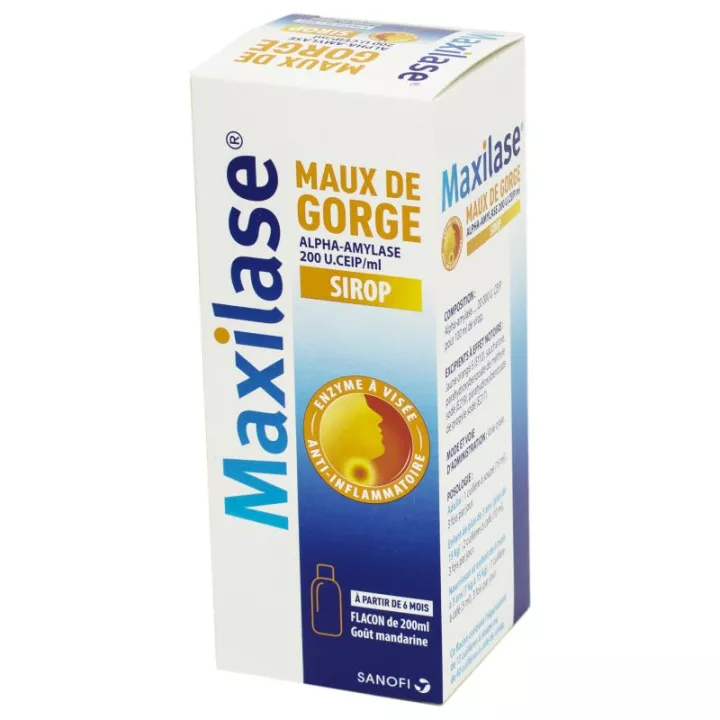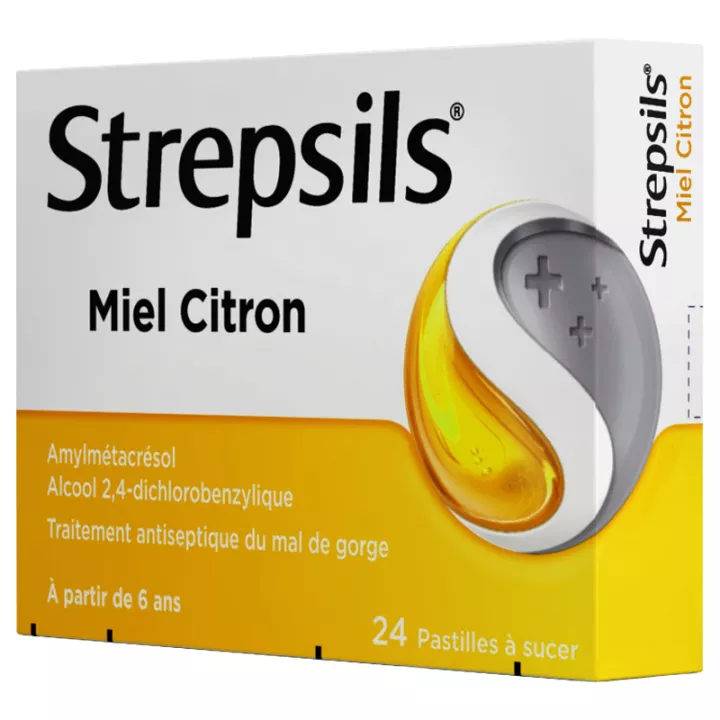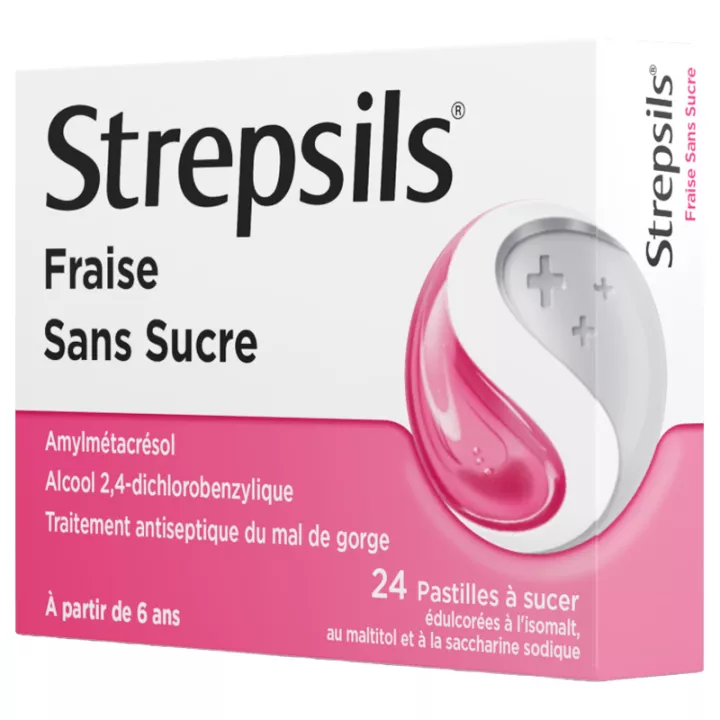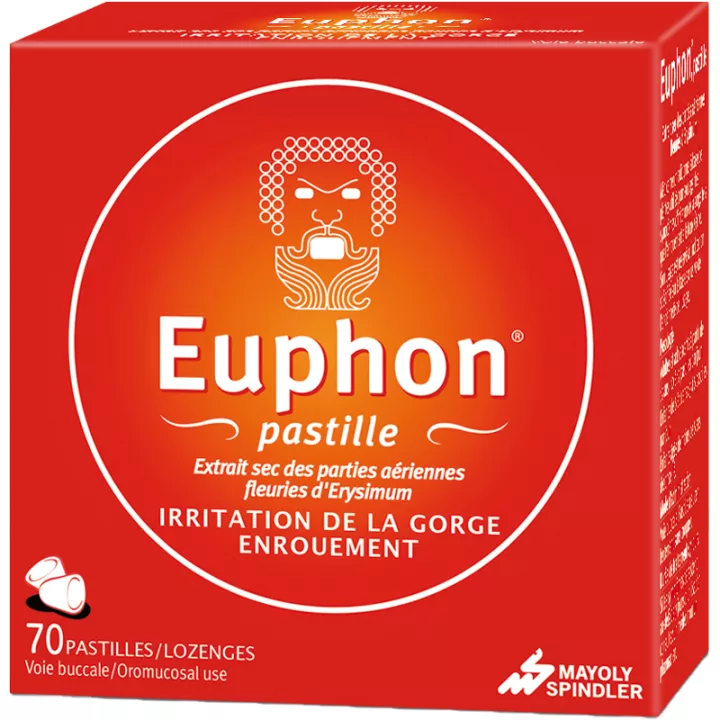NOTICE
ANSM - Updated: 02/11/2020
Name of the drug
CANTALENE, tablet to suck
Lysozyme hydrochloride / chlorhexidine acetate / tetracaine hydrochloride
Framed
Read all of this leaflet carefully before taking this medicine because it contains important information for you.
You should always take this medicine carefully following the information given in this leaflet or by your doctor or pharmacist.
· Keep this leaflet. You might need to read it again.
· Contact your pharmacist for any advice or information.
· If you get any side effects talk to your doctor or pharmacist. This also applies to any side effects that are not mentioned in this leaflet. See section 4.
· You should contact your doctor if you experience no improvement or feel less well after 5 days.
What does this booklet contain ?
1. What is CANTALENE, sucking tablet and in which cases is it used?
2. What information should be known before taking CANTALENE, tablet to suck?
3. How to take CANTALENE, tablet to suck?
4. What are the possible side effects?
5. How to store CANTALENE, tablet to suck?
6. Contents of the pack and other information.
1. WHAT IS CANTALENE, tablet to suck AND WHAT IT IS USED FOR?
Pharmacotherapeutic group: LOCAL ANTISEPTIC - ATC code: R02A (throat preparation)
This medication is indicated for mild sore throat without fever, canker sores and small mouth sores in adults and children over 15 years old.
NB: Given the general clinical signs of bacterial infection, in particular fever, general antibiotic therapy should be considered.
2. WHAT YOU NEED TO KNOW BEFORE TAKING CANTALENE, tablet to suck?
If your doctor has informed you of an intolerance to certain sugars, contact your doctor before taking this medicine.
Never take CANTALENE, tablet to suck:
· If you are allergic to local anesthetics, chlorhexidine or the other ingredients of this medicine,
· In children under 15,
· In the case of phenylketonuria (hereditary disease detected at birth), due to the presence of aspartame.
IN CASE OF DOUBT, IT IS ESSENTIAL TO ASK FOR THE OPINION OF YOUR DOCTOR OR YOUR PHARMACIST.
Warnings and Precautions
Talk to your doctor or pharmacist before taking CANTALENE, tablet to suck.
· The anesthesia caused by this medication in the throat can promote aspiration (coughing during a meal with the impression of “swallowing askew”) when swallowing food.
It is therefore imperative:
o not to use this medication before meals or before taking a drink.
o not to use this medication in the event of a history of significant skin reactions or allergy to a skin antiseptic potentially containing chlorhexidine
Prolonged use (more than 5 days) of this medication is undesirable, as it can alter the natural microbial balance of the mouth, throat.
· Sore throat : in the event of fever, purulent sputum (sputum), discomfort when swallowing food, such as worsening or no improvement after 5 days: CONSULT YOUR DOCTOR
· Canker sores, small mouth sores : in the event of extensive lesions, lesions of the lesions, the onset of fever: CONSULT YOUR DOCTOR IMMEDIATELY.
· DO NOT LEAVE THIS MEDICINE WITHIN THE REACH OF CHILDREN
· The use of this medication is not recommended in patients with fructose intolerance, glucose-galactose malabsorption syndrome or sucrase / isomaltase deficiency (rare hereditary diseases)
· This medication contains 0.93 g of sucrose per tablet, which must be taken into account in the daily ration in the event of a low-sugar diet or in the event of diabetes.
· Hypersensitivity: allergic reactions, sometimes serious or potentially life threatening (anaphylactic shock) such as a rash associated with itching, breathing difficulties alone or associated with swelling of the tongue or face, may occur as early as 1 making era. In this case, stop the treatment immediately and see a doctor as soon as possible.
· The attention of athletes will be drawn to the fact that this specialty contains an active principle (tetracaine) which can induce a positive reaction from the tests carried out during anti-doping controls.
Children
Not applicable.
Other medicines and CANTALENE, tablet to suck
This medicine contains a local anesthetic (tetracaine hydrochloride) and chlorhexidine (antiseptic). Other medicines contain it. Do not combine them, so as not to exceed the maximum recommended doses (see instructions for use and dosage).
Do not use several medicines containing an antiseptic at the same time.
Tell your doctor or pharmacist if you are taking, have recently taken or might take any other medicines.
CANTALENE, tablet to suck with food, drink and alcohol
The tablets should not be taken before meals or before drinking.
Pregnancy and breast feeding
If you are pregnant or breast-feeding, think you may be pregnant or are planning to have a baby, ask your doctor or pharmacist for advice. before taking this medicine.
Pregnancy
It is best not to use this medicine during pregnancy.
Feeding with milk
The use of this medication should be avoided if breast-feeding.
Do not take any medication during pregnancy or breastfeeding without asking your doctor or pharmacist for advice.
Driving and using machines
No effect on the ability to drive and use machines has been observed.
CANTALENE, tablet to suck contains aspartame and sucrose.
3. HOW TO TAKE CANTALENE, tablet to suck?
Always take this medicine exactly as described in this leaflet or as your doctor or pharmacist has told you. Check with your doctor or pharmacist if in doubt.
Dosage
Reserved for adults and children over 15 years old.
Adult and child over 15:
· 1 tablet to suck 6 times per 24 hours
· catches should be spaced at least 2 hours apart.
Route of administration
Oral route.
Slowly suck on the tablets without chewing them.
Duration of treatment
The duration of use is limited to 5 days.
If symptoms persist for more than 5 days, consult your doctor.
If you take more CANTALENE, tablet to suck than you should
Taken in large amounts or repeatedly, this medicine can pass into the bloodstream and may affect the heart and nervous system, possibly causing seizures.
If you forget to take CANTALENE, tablet to suck
Not applicable.
If you stop taking CANTALENE, tablet to suck
Not applicable.
If you have any further questions on the use of this medicine, ask your doctor or pharmacist for more information.
4. WHAT ARE THE POSSIBLE SIDE EFFECTS?
Like all medicines, this medicine can cause side effects, although not everybody gets them.
The following effects may occur:
· Allergic reaction : If you experience a rash, swelling of the tongue or face, difficulty in breathing, stop taking this medicine and contact medical help immediately . These effects may be symptoms of a severe allergic reaction (anaphylactic shock);
· Possibility of temporary numbness of the tongue;
· In the event of a false route (cough during a meal with the impression of "swallowing askew"), it is advisable to interrupt the treatment and seek the advice of a doctor.
· A brown coloring of the tongue: it is harmless and disappears when treatment is stopped.
· Staining of the teeth can also occur; it can be easily prevented by daily brushing.
Reporting of side effects
If you get any side effects talk to your doctor or pharmacist. This also applies to any side effects that are not mentioned in this leaflet. You can also report side effects directly via the national reporting system: National Agency for Medicines and Health Products Safety (ANSM) and network of Regional Pharmacovigilance Centers - Website: www.signalement-sante.gouv.fr
By reporting side effects you can help provide more information on the safety of this medicine.
5. HOW TO STORE CANTALENE, tablet to suck?
Keep this medication out of the sight and reach of children.
Do not use this medicine after the expiry date which is stated on the carton and / or the blister after EXP.
The expiration date refers to the last day of that month.
Store away from light and humidity
Do not throw away any medicine via wastewater or household waste. Ask your pharmacist how to throw away medicines you no longer use. These measures will help protect the environment.
6. CONTENTS OF THE PACKAGE AND OTHER INFORMATION
What CANTALENE contains, tablet to suck
· The active substances are:
Lysozyme hydrochloride ............................................... ............................................ 20.00 mg
corresponding quantity in Hartsell units of lysozyme ........................................... . 2 10 4 units
Chlorhexidine acetate ............................................... ................................................ 2, 00 mg
Tetracaine hydrochloride ............................................... .............................................. .0.20 mg
For a tablet of 1 g.
One tablet contains 0.93 g of sucrose.
· The other ingredients are:
Vanillin, strawberry flavor *, aspartame, colloidal anhydrous silica, magnesium stearate, alveosugar with 2.5% maltodextrin **.
* Composition of the strawberry flavor: ethyl esters of acetic, butyric, valerian, maltol, ethylmaltol, gamma-undecalactone, vanillin, gum arabic, maltodextrin.
** Composition of the alveosugar with 2.5% maltodextrin: sucrose, maltodextrin.
What is CANTALENE, tablet to suck and contents of the outer packaging
Tablet to suck.
Box of 24 tablets.
Marketing authorization holder
FRENCH PHARMACEUTICAL COOPERATION
PLACE LUCIEN AUVERT
77020 MELUN CEDEX
Marketing authorization operator
FRENCH PHARMACEUTICAL COOPERATION
PLACE LUCIEN AUVERT
77020 MELUN CEDEX
Maker
A.NATTERMANN ET CIE GMBH
NATTERMANNALLEE I
50829 COLOGNE
GERMANY
Or
DELPHARM BRETIGNY
PETIT PARIS FACTORY
91220 BRETIGNY SUR ORGE
Names of the drug in the Member States of the European Economic Area
Not applicable.
The last date on which this leaflet was revised is:
[to be completed later by the holder]
Other
Detailed information on this medication is available on the ANSM website (France).











